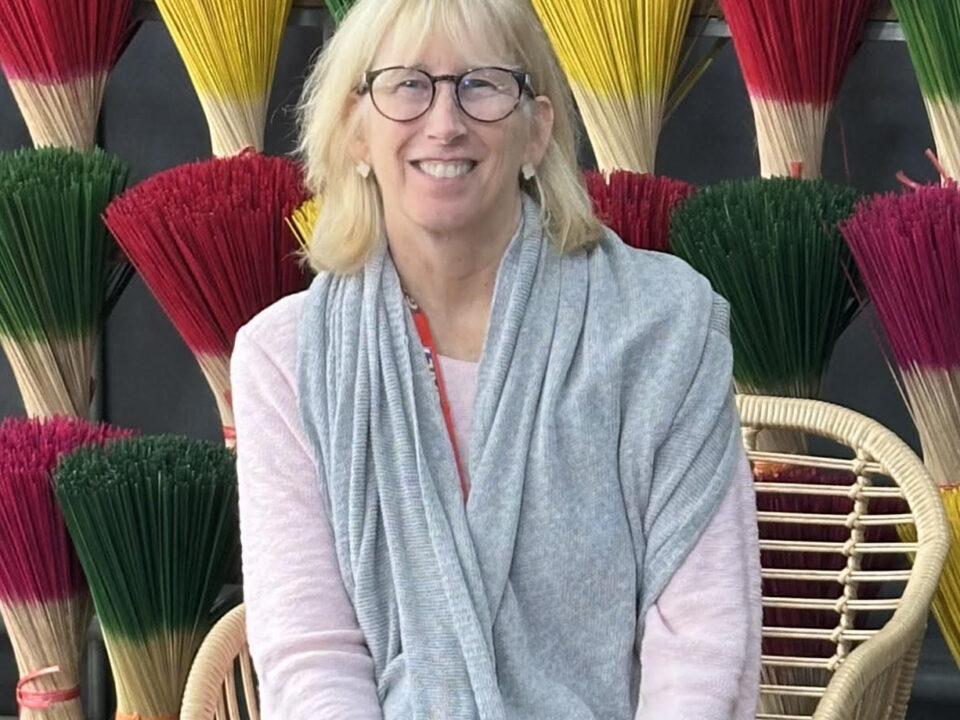
14 Life Lessons in 14 Years
March 6, 2024
Find Your Way With Beautiful Questions
April 29, 2024Who do you choose to include in your life?
Who are the people you choose to include in your life? Of all the people you know, can you think of the one trait that makes you want to stay in touch with someone through all the years, all the moves, and all the trials of life?
For me, it’s the people who always make me laugh. All of the time and every time, no matter how we start the conversation. No matter how serious or silly the situation, my survival and peace of mind depend on the divine grace of laughter.
I find myself drawn to professionals and I always make time on my calendar for those who know how to use humor as a powerful tool for diffusing tension during stressful situations. Every week there are difficult decisions, tight deadlines, and hard things I don’t want to do. Does that sound familiar?
How about your life, now? How about your situation this month? Depending on who you talk with next, you might hear that life is hard. You might believe that life is bittersweet and there’s always light with dark and always love on the other side of grief and loss.
Our choices for coping are many. Instead of drugs, alcohol, or avoidance, I go for laughter. I have intentionally identified at least 12 people who can make me laugh and always show wisdom and sensitivity. I made a pact with each of the 12 to never let more than a month slip by without talking with each other. These are conversations and deep listening in person, by phone, or by Zoom, and not stopping at email or texting.
When I get feelings of being stuck, feelings of worry, or sadness over a situation that seems hopeless, I go for laughter. I contact one or more of those 12 people and they provide much-needed relief and comfort by fostering a sense of resilience and resourcefulness.
It may seem counterintuitive to laugh during difficult times, but humor is a coping mechanism that helps the brain process emotions and find a temporary escape from sorrow while strengthening bonds with the people who make me laugh.
What about professional situations?
Laughter is one indicator that creative thinking is going on. Not quite giggles, but howling laughter. Especially in a workgroup situation where you are engaged to work on the same problem, together, the outcome you want is laughter. That’s because soon after the laughter subsides you realize you just went way outside the box and found the most innovative approach of all. That’s why the objective is not a solution; instead, the goal is loud laughter that comes from where the brain has no worries, and that gives you many solutions, ranging from “not on your life” to “easy” to consider.
Here’s how I first learned about this brain miracle and have used it every day for 30 years ever since. It gets better as you get more practice and trust your brain more.

Credit Arek Socha on Pixabay
Here’s the exercise in a nutshell: Flip worry into genius.
I learned it from Jerry Allan who teaches creativity and design thinking.
When you are stuck or worried, the best next thing to do is to immediately get silly. Specifically, grab something to write with and notepad or type away in the notes area of your smartphone or computer and complete this sentence: Here’s what I could do about this (issue).
Write as much as you can as fast as you can. Don’t stop for spelling or grammar. Generate more than 50 “I could” thoughts in two minutes or less. That’s right. You are going for speed to get every possible “could” or option out of your head. Most of all, you are doing this for your brain and no other reason. In two minutes you just took control of the brain and shifted everything toward laughter.
Most importantly, know when you start this rapid dump of brain thoughts, you will never do anything you just wrote. That’s the key. Write fast without judging. Judging is in that worry part of the brain. Don’t listen to it. The more ridiculous the next “I could…” statement seems, the better. When you do this, you are in total command of worry, which cannot invade in the side of the brain where you have laughter.
For example, say the worry is you need to pay a bill and you have no money to do that. So you start writing rapidly all of the things you COULD do —but never would such as: I could rob a bank… I could win the lottery…I could borrow from a friend…I could have a one-item garage sale and see who wants to buy that extra tool chest I stuck in the corner 10 years ago… I could fly to the moon and see who has extra cash there…. And so on. Until you fill the page as fast as you can write. No stopping.
Push yourself to keep writing until you get to 50, which is about one sheet of paper. When you start to smile or giggle at what you wrote, write something 10 times more ridiculous. Keep doing this for as long as five minutes, until you are laughing.
This gets even better when you this in a small group of people you trust and who already love you for who you are. That’s what happened the first time I did this “Worry to Laughter” exercise and often howls of laughter take over as you push further, to create more “could” statements.

Credit Pexels on Pixabay
Insights Into a Bright Mind
One of the superstars and heroes of our community of gifted professionals and communicators is Nicole Tetreault, Ph.D., who wrote the book Insight into a Bright Mind: A Neuroscientist’s Personal Stories of Unique Thinking. She is a neuroscientist, author, meditation teacher and speaker. Most of all, she makes clear “I am a human being just like you—learning the best ways to practice and act from love.”
In a recent article, The Divine Grace of Laughter, Tetrault confirms what we learned over and again with laughter. It ignites mental states similar to medication and the brain gets unstuck from the worry and finds new thought patterns and things entirely possible, which you could not see or think about in your state of being a victim to misery and pain.
Tetrault writes, “When we laugh with others, we connect more deeply and build more positive relationships. Science shows we like one another more when we laugh together. Laughing together activates mirror neurons in our brains causing us to see and reflect one another, in that instant, we laugh as one. Through our waves of laughter together we commune as a single symphony laughing as one.”
The whole point of the community for Gifted Professionals and Communicators is the same reason why laughter is necessary: We cultivate more positive and more supportive environments where individuals feel seen, valued, understood, and empowered to succeed.
Tetrault writes, “When we laugh we are free, like when we meditate the mind is free and we are more open to different possibilities. Through laughing we can build resilience and receive the courage to get back up again when we fall. Through our tears, our smiles, and belly laughs, we can plant the seeds of hope for a new day. We can have the courage to love ourselves and others exactly as we are and forgive ourselves when we forget. And when we forget, we can return home to the heart of laughter together.”
The world can feel overwhelming sometimes, and we may feel stuck or flooded with worry, anger, and disillusionment.
Our focus goes inward to our own stories and self-talk. If we are suffering, in grief, or in a place that feels like we are stuck, it seems we can look out windows but we can find no doors to leave.
This happens to everyone and seems to take on extra dimensions if you are professional or gifted or usually effective with communication. That’s because we overthink everything and perceive extra layers of complexities, more so than 90% of the people in the world.
When you go through changes and try new things, Tetrault reminds us to connect to the process of joy and to remember that as you are in the process of trying new things.
What are your favorite thoughts about laughter? Here are three to kick off the comments:
“Laughter activates the brain’s dopamine reward system, stimulating feelings of pleasure and satisfaction.” – Dr. Robert Provine, Neuroscientist, and Author of “Laughter: A Scientific Investigation”.
“Against the assault of laughter, nothing can stand.” – Mark Twain
“Humor can foster brain connectivity—laughter truly can be the best medicine.” – Dr. Kiminobu Sugaya, a neuroscientist at the University of Central Florida’s College of Medicine.




